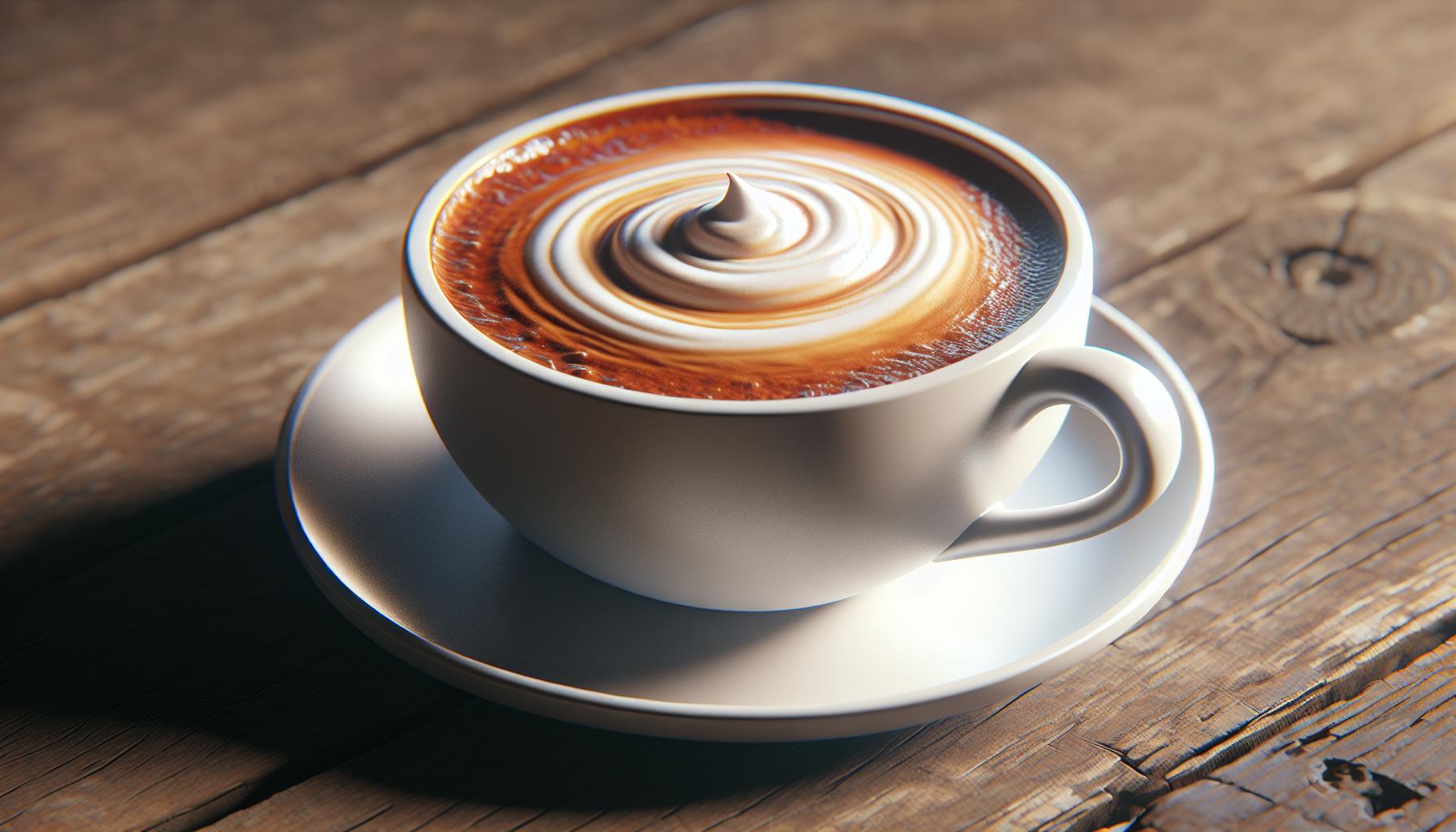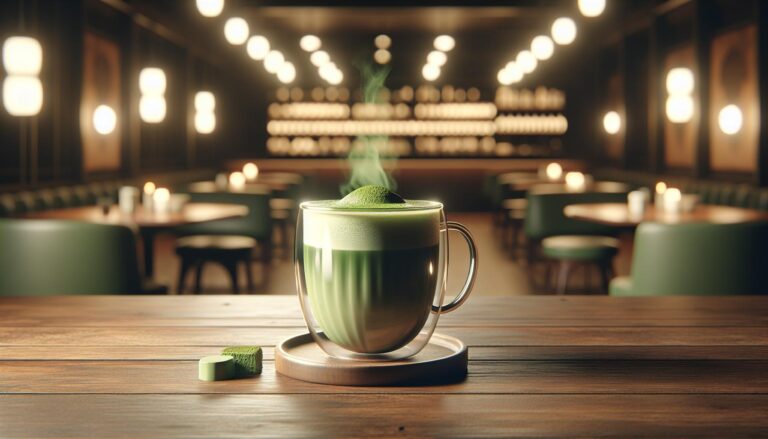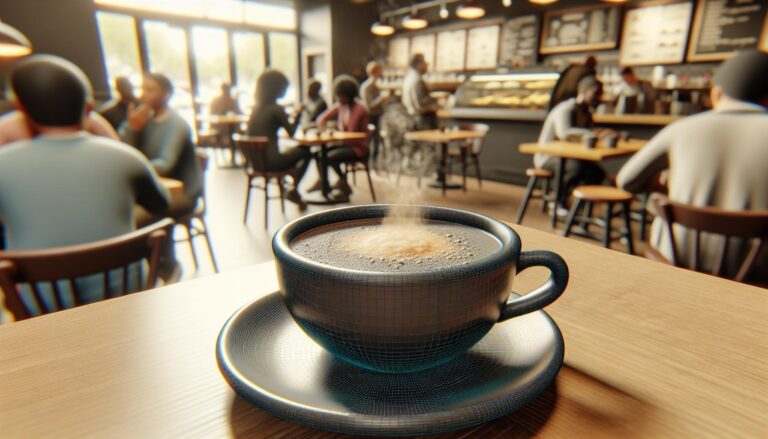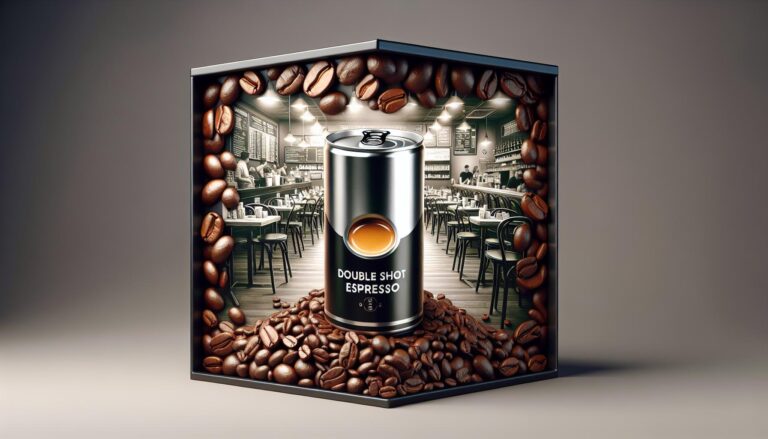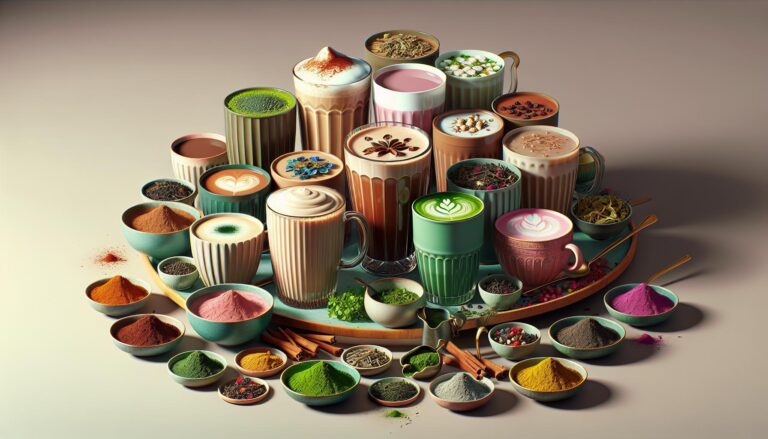Starbucks Cappuccino Caffeine Content: All You Need to Know!
How much caffeine is in Starbucks Cappuccino? A Grande Starbucks Cappuccino contains an approximate value of 150 milligrams of caffeine. This amount can vary slightly depending on the size and type of roast used.
Starbucks cappuccinos come in various sizes, and each one packs a different caffeine punch. From the tall to the venti, understanding these differences ensures you get just the right amount of buzz to keep you going.
Key Takeaways
- Caffeine Content by Size: Starbucks cappuccinos vary in caffeine content by size: Tall (75 mg), Grande (150 mg), and Venti (225 mg). A Tall cappuccino typically contains a single shot of espresso, resulting in relatively weaker caffeine levels compared to a brewed coffee of the same size.
- Unique Features: Starbucks cappuccinos are made with a strong espresso shot and frothy steamed milk, offering a rich and creamy texture.
- Customization Options: Customers can customize their cappuccinos with different milk options and additional espresso shots, affecting the caffeine content.
- Health Implications: Moderate caffeine consumption can boost alertness and improve physical performance, but excessive intake may lead to health issues such as insomnia and anxiety.
- Comparison with Competitors: Starbucks’ caffeine content is generally lower compared to some competitors like Dunkin’, but the taste and preparation methods of each brand provide unique experiences.
Overview of Starbucks Cappuccinos
Starbucks cappuccinos stand out for their rich flavor and creamy texture. Each cup packs a unique taste and varying caffeine levels.
Starbucks offers a wide range of beverages, including cappuccinos.
What Makes Starbucks Cappuccino Unique?
The blend of strong espresso and steamed milk makes Starbucks cappuccinos distinct. Starbucks uses a signature espresso roast, giving cappuccinos a robust and balanced flavor.
The frothy milk on top adds a smooth finish, setting it apart from other coffee drinks. While Starbucks strives to provide allergen information, they cannot guarantee that their cappuccinos are allergen free due to shared equipment.
- Espresso: Starbucks uses a strong espresso shot as the base for its cappuccinos. Each shot contains about 75 mg of caffeine.
- Milk: Steamed milk forms the body of the cappuccino. You can choose between whole, skim, or non-dairy options like almond or soy milk.
- Foam: The top layer of foam gives cappuccinos their creamy texture. Baristas skillfully steam the milk to create a thick, velvety foam.
Use this information to understand what makes Starbucks cappuccinos unique and enjoy their balance of flavors and textures.
Read Also: Starbucks Macchiato Caffeine Content
Analyzing Starbucks Cappuccino Caffeine Content
This section explores the caffeine content in Starbucks cappuccinos and the factors that influence it. Lighter roasts generally contain more caffeine than darker roasts.
How Much Caffeine Is in a Starbucks Cappuccino?
A Starbucks cappuccino contains varying amounts of caffeine depending on its size.
| Size | Caffeine Content (mg) |
|---|---|
| Tall (12 oz) | 75 mg |
| Grande (16 oz) | 150 mg |
| Venti (20 oz) | 225 mg |
A Tall-sized cappuccino at Starbucks has 75 mg of caffeine. The Grande size offers 150 mg of caffeine, while the Venti contains 225 mg of caffeine. These measurements help you choose the right amount of caffeine based on your needs.
For information on other beverages beyond Starbucks cappuccinos, you can refer to a comprehensive caffeine database.
Factors Influencing Caffeine Content
Several factors influence the caffeine content in a Starbucks cappuccino.
- Espresso Shots: The number of espresso shots in your drink impacts the caffeine level. A Tall has one shot, a Grande has two, and a Venti has three.
- Bean Type: Starbucks uses different beans depending on availability and seasonal offerings. The caffeine content varies with each type.
- Customization: You can customize your cappuccino by adding extra shots of espresso or choosing decaffeinated espresso, impacting total caffeine.
Also Read: Starbucks Latte Caffeine Content
Health Implications of Caffeine in Cappuccinos
Caffeine offers various benefits yet brings potential risks, especially in cappuccinos. Understanding these can help you make better choices about consuming Starbucks cappuccinos.
Benefits of Caffeine
Caffeine boosts alertness. The stimulant properties increase focus and reduce fatigue. Studies show improved cognitive functions in controlled caffeine intakes.
Caffeine enhances physical performance. Athletes often use it to improve endurance and energy levels during workouts.
Moderate caffeine consumption lowers the risk of certain diseases. Research suggests a link between caffeine intake and reduced risk of Parkinson’s disease and Alzheimer’s.
Potential Risks Associated with Caffeine Consumption
Excessive caffeine leads to health issues. Consuming too much can cause insomnia, jitteriness, and increased heart rates.
Sensitive individuals may face adverse effects. People with caffeine sensitivity experience headaches, anxiety, or digestive problems with lower amounts.
Interactions with medications. If you take medications, caffeine might amplify side effects or reduce efficacy. Always consult a healthcare provider if unsure.
Understanding these benefits and risks helps you enjoy your Starbucks cappuccino wisely.
Also Read: Starbucks Espresso Caffeine Content
Comparing Starbucks Cappuccino With Other Brands
Starbucks cappuccinos offer distinctive tastes and caffeine levels, but how do they stack up against other brands?
This section compares caffeine content and flavor differences to help you choose the best cappuccino for your preferences.
Caffeine Content in Competing Brands
Caffeine content varies across different brands. For reference, here’s a comparison table based on available data:
| Brand | Size | Caffeine Content |
|---|---|---|
| Starbucks | Tall | 75 mg |
| Dunkin’ | Small | 120 mg |
| Peet’s Coffee | Small | 70 mg |
| McCafe | Small | 71 mg |
Starbucks Tall cappuccino has 75 mg of caffeine, which is less than Dunkin’ but more than Peet’s and McCafe. This difference helps you manage your caffeine intake based on your daily needs.
Flavor and Preparation Differences
Different brands use unique methods and ingredients, impacting flavor. Starbucks uses a signature espresso roast, giving a robust, rich taste with a velvety foam.
Dunkin’ cappuccinos have a milder flavor, using a lighter blend catering to those preferring less intensity.
Peet’s Coffee offers a bolder flavor, with their dark roast providing a strong, rich experience.
McCafe, the McDonald’s brand, focuses on a balanced and smooth flavor suitable for a broad audience.
Starbucks’ preparation of cappuccinos includes expertly steamed milk and foam, often with a focus on consistency.
Dunkin’ and Peet’s employ similar techniques but with varying bean types and roasting methods, resulting in distinct taste profiles.
McCafe prides itself on quick and efficient preparation, making it a convenient choice without sacrificing quality.
Use these differences in caffeine content, flavor, and preparation to select the cappuccino that meets your taste and energy needs.
Also Read: Starbucks Caffeine Content
Conclusion
Understanding the caffeine content in Starbucks cappuccinos empowers you to make the best choice for your energy needs and taste preferences.
Whether you prefer a Tall with 75 mg of caffeine or a Venti with 225 mg, Starbucks offers a range of options.
By comparing Starbucks’ offerings with other brands like Dunkin’ and Peet’s Coffee, you can find the perfect cappuccino that suits your lifestyle.
Remember, the blend of espresso and steamed milk, along with the customization options, allows you to tailor your drink exactly how you like it.
Enjoy your next Starbucks cappuccino with confidence, knowing you’ve made an informed decision.
Frequently Asked Questions
What is unique about Starbucks cappuccinos?
Starbucks cappuccinos are known for their rich flavor, achieved through a blend of their signature espresso roast and steamed milk. The resulting robust taste is complemented by a velvety foam topping, making their cappuccinos distinct.
How much caffeine is in a Starbucks cappuccino?
The caffeine content in Starbucks cappuccinos varies by size: a Tall has 75 mg, a Grande has 150 mg, and a Venti has 225 mg. Customization options may alter these figures slightly.
What are the components of a Starbucks cappuccino?
A Starbucks cappuccino consists of an espresso shot with 75 mg of caffeine, steamed milk, and a thick foam topping. The specific proportions and preparation methods contribute to its unique taste.
How do Starbucks cappuccinos compare to other brands?
Starbucks cappuccinos typically have a robust flavor due to their signature espresso roast. In comparison, brands like Dunkin’, Peet’s Coffee, and McCafe may offer different caffeine levels and flavor profiles based on their unique ingredients and preparation techniques.
Can I customize the caffeine content in a Starbucks cappuccino?
Yes, you can customize the caffeine content by adjusting the number of espresso shots or choosing different bean types. This flexibility allows you to tailor your drink to your specific energy needs.
How does the caffeine level in a Starbucks cappuccino impact my energy?
The caffeine level in a Starbucks cappuccino can provide a significant energy boost. Choosing a Tall (75 mg), Grande (150 mg), or Venti (225 mg) allows you to match your drink to your desired energy level.
What milk options are available for a Starbucks cappuccino?
Starbucks offers a variety of milk options for cappuccinos, including whole milk, 2% milk, non-fat milk, soy, almond, and oat milk. These choices can affect both the flavor and texture of the cappuccino.
Are there differences in flavor between Starbucks and other coffee brands?
Yes, each coffee brand uses unique methods and ingredients that impact the flavor of their cappuccinos. Starbucks is known for its robust espresso roast, while brands like Dunkin’ and McCafe may use different beans and techniques, resulting in varying flavors.
Also Read:

